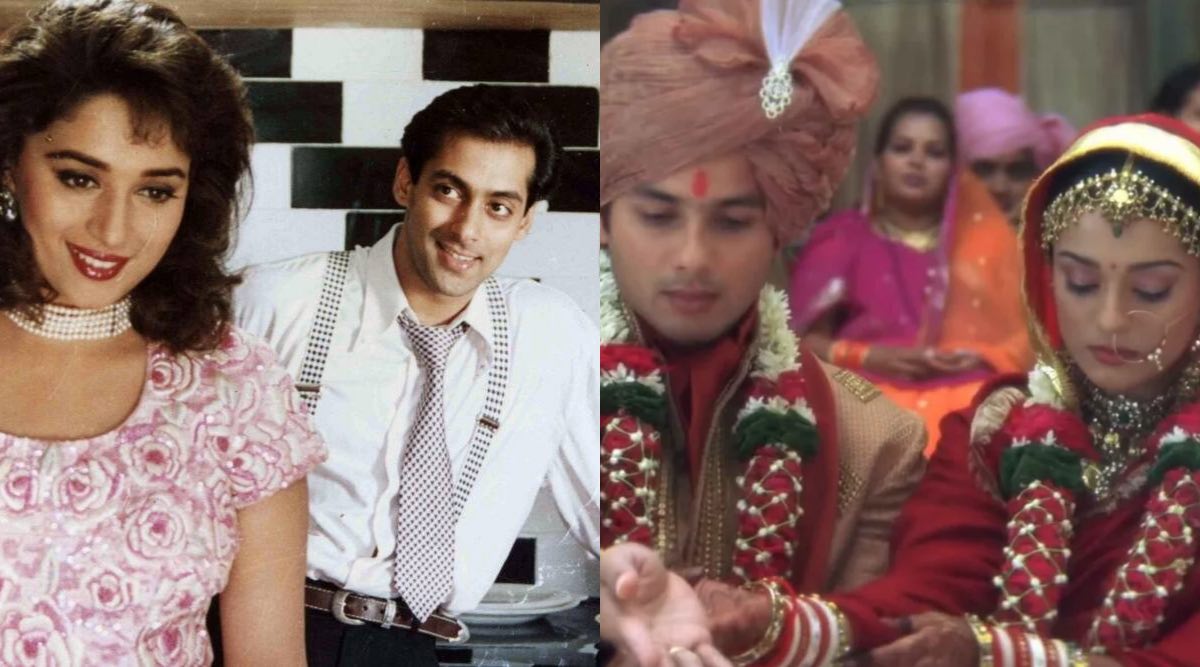 Sooraj Barjatya celebrates his birthday (Photos: Express Archives)
Sooraj Barjatya celebrates his birthday (Photos: Express Archives) Each decade in Bollywood is an era — and the 90’s was defined by the rambunctious family dramas by Sooraj Barjatya, including Maine Pyar Kiya, Hum Aapke Hain Koun, and Hum Saath Saath Hain. He gave a new meaning to joint families on screen, and carved a unique brand for himself while keeping the ethos of Rajshri — which has been known for keeping true to Indian values — alive.
What does a 90’s Barjatya drama comprise? For starters, a lengthy soundtrack, some emphasising the family values in the film, grand sets, a few caricatured villains, along with several wedding and pre-wedding functions, a minor inconvenience and a resolution. In Maine Pyar Kiya, the dashing hero (played by Salman), is determined to win over his lover’s angry father, and prove that he is worth his salt. Hum Aapke Hain Koun was completely a family affair, literally—with Salman and Madhuri Dixit’s love story buried somewhere in the middle. It crafted the idea of the Bollywood family, packed with songs, antakshri sessions, numerous wedding and pre-wedding functions, all in a house, filled with relatives. It also prioritised families above everything else, including love and personal choice — as Salman and Madhuri were ready to give up their romance for the sake of family.
This emphasis on warm families became synonymous with Barjatya after Hum Saath Saath Hain, which dealt with three couples. He had now created a brand for himself with his family films–even if they weren’t realistic by any means, it was enjoyable to watch them. The iconic songs became a part of wedding soundtracks, and the joota chupai ritual gained currency after he dedicated an entire song to it in Hum Aapke Hain Koun. The film set the tone for the decade, something that Karan Johar and Aditya Chopra imbibed in their films, later.
Barjatya understands that one cannot make a Hum Aapke Hain Koun today, as he told Film Companion in 2019. He realises that the meaning of family might have changed, but the fundamentals are the same. He looked fondly back at 1994, as the time where ‘people would go to see dreams, but now, people are living their dreams’. Yet, he maintains the belief that people would still want to come together, and this continues to manifest in his films. “Baat-cheet should continue,” he said with a laugh. He just wanted to create warmth and joy in his films, as he said, and see reunions of families—people coming together and enjoying spending time together. It’s this ‘warmth’ that transcends into his films.
Barjatya tried to veer off his own beaten path and follow trends with Main Prem Ki Diwani Hoon, which wasn’t the best decision in hindsight. The film, which despite its star cast, bombed miserably at the box office. It had the exuberance of the 90’s, but Barjatya forgot that this was the 2000’s and that sensibilities were changing. In 2019, the filmmaker had told PTI, that he had been advised to not make family dramas—but he didn’t agree. “I’ve been told many times to not make family dramas as they won’t work. But then I also have more number of people who say, ‘No, make the film you want to.’ This is my voice. A filmmaker cannot make films as per the trends,” he said. “I made Main Prem Ki Deewani Hoon as per trend and that failed. I felt so bad, it had Hrithik, Abhishek, Kareena, but as a maker I wasn’t myself. Market doesn’t dictate creation,” he added.
Nevertheless, he didn’t back down, he returned with Vivaah in 2006, starring Shahid Kapoor and Amrita Rao, which worked well, almost elevated to cult classic status, probably owing to that one dialogue by Amrita “Jal lijiye”. In 2015, he made Prem Ratan Dhan Paayo with the same grand sets and exuberant songs. The filmmaker’s sensibilities might have evolved with the times, but he ensures that the viewers can always recognise a Barjatya film. He was right, his films seem to exude that trademark warmth, regardless of the times.
- The Indian Express website has been rated GREEN for its credibility and trustworthiness by Newsguard, a global service that rates news sources for their journalistic standards.

